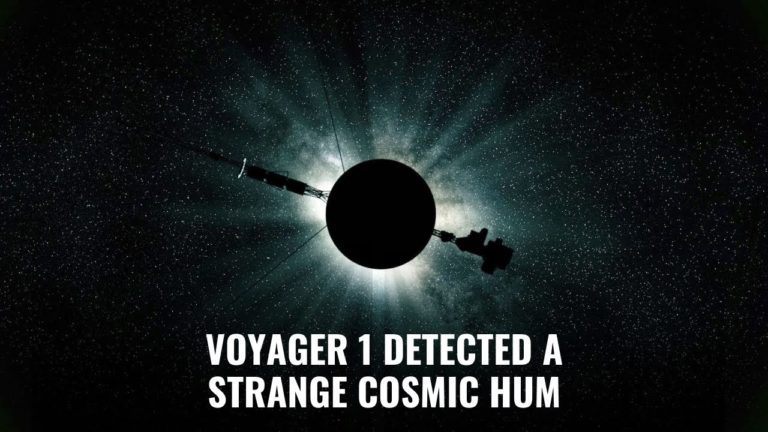Voyager 1 Has Detected a Mysterious Cosmic Hum In Deep Space
Voyager 1 spacecraft has detected a mysterious cosmic hum in interstellar space. Voyager 1 is the farthest spacecraft from Earth. The twin Voyager spacecraft were launched in 1977 to take advantage of a rare planetary alignment that occurs every 176 years. It made it possible for us to explore all the four gas giants of the solar system: Jupiter, Saturn, Uranus, and Neptune.
In 2012, Voyager 1 became the first spacecraft to exit the heliosphere and enter interstellar space. Traveling at about 17 km/s, Voyager 1 is still sending back data. Since it is so far away, even radio transmissions take 21 hours to get there. The probe’s latest discovery has questioned our perception of the emptiness of the deep space out there. Voyager 1 has detected a steady hum of plasma waves in interstellar space at a low frequency of 3 kHz.
Also called the fourth state of matter, plasma is the most abundant state in the universe. Stars are magnetized balls of plasma. It is a hot and ionized gas composed of electrons stripped away from their parent atoms. The movement of electrons in plasma leads to thermally excited plasma oscillations. Thanks to its plasma wave system, Voyager 1 is well equipped to measure plasma vibrations in the interstellar medium.
Since 2012, Voyager 1 has detected about eight distinct plasma oscillation events, ranging in length from a couple of days to a full year. They are mainly caused by instabilities in the motions of electrons as they interact with shockwaves generated by the Sun. However, in 2017, Voyager 1 began to detect a weak yet steady and persistent plasma signature outside of these energetic events. This newly detected signal is strange because it is narrower than the plasma oscillation events and has held itself steady at about 3 kHz.
Another weird thing about this signal is that it has persisted for nearly three years, which is the most prolonged continuous plasma signal recorded by Voyager 1 so far. In these three years, the spacecraft has traveled more than a billion miles, but the faint hum hasn’t changed at all. These types of vibrations mainly originate in the absence of any coronal mass ejections from the Sun. This means that researchers can now use Voyager 1 to measure the frequency of these vibrations and the plasma density whenever they want, even in regions where there is no Sun’s influence.
A deep analysis of this hum will help us better understand, the interaction between the interstellar medium and the solar wind. Earlier, Voyager 2 had reported an increase in electron density just on the other side of the heliopause. So knowing the pattern of how the density is changing can also help figure out the reason behind it.
But on the darker side, our farthest spacecraft is running out of power. Its power source may not be able to keep the instruments operating after 2025. Still, this detection has raised a hope that even in a few of its remaining years, Voyager 1 is bound to surprise us with its capabilities by exploring the deep corners of the unknown space.
Do not forget to share your opinion with us to provide you with the best posts !




0 Comments